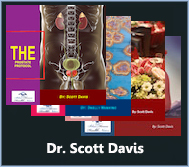 I used to have migraines every 10 or 12 days. I now haven’t had one for 14 months. I’m not expecting one ever again. Let me tell you how it all happened for me. And let’s see if it can be the same for you too.
I used to have migraines every 10 or 12 days. I now haven’t had one for 14 months. I’m not expecting one ever again. Let me tell you how it all happened for me. And let’s see if it can be the same for you too.
Click to see more detail on Video
What helps female migraines?
Managing migraines in females involves a combination of lifestyle changes, preventive measures, acute treatment during attacks, and, in some cases, medical interventions. Here are some strategies that can help alleviate and prevent migraine attacks in females:
- Identify triggers: Keep a migraine diary to track potential triggers such as certain foods, hormonal changes, stress, lack of sleep, or environmental factors. Avoiding known triggers can help prevent migraine attacks.
- Manage stress: Practice stress-reduction techniques such as deep breathing, meditation, yoga, progressive muscle relaxation, or mindfulness to help manage stress, which can trigger migraines in some individuals.
- Maintain regular sleep patterns: Establish a regular sleep schedule and prioritize adequate sleep, as disruptions in sleep patterns can trigger migraines. Aim for 7-9 hours of quality sleep per night.
- Hormonal management: For women whose migraines are triggered or worsened by hormonal fluctuations, hormonal therapies such as oral contraceptives, hormone replacement therapy, or medications that regulate hormonal levels may be helpful. However, hormonal therapies should be used under the guidance of a healthcare provider.
- Dietary modifications: Identify and avoid potential migraine triggers in your diet, such as aged cheeses, processed meats, chocolate, caffeine, alcohol, artificial sweeteners, and foods containing MSG (monosodium glutamate).
- Stay hydrated: Drink plenty of water throughout the day to stay hydrated, as dehydration can trigger migraines in some individuals. Limit or avoid caffeinated and alcoholic beverages, which can contribute to dehydration.
- Regular exercise: Engage in regular physical activity, such as walking, swimming, cycling, or yoga, as exercise can help reduce the frequency and severity of migraines. Aim for at least 30 minutes of moderate-intensity exercise most days of the week.
- Acute treatment: Use over-the-counter or prescription medications to relieve migraine symptoms during attacks. Options include nonsteroidal anti-inflammatory drugs (NSAIDs) such as ibuprofen or naproxen, triptans, ergotamines, anti-nausea medications, and medications specifically designed for migraines.
- Preventive medications: For individuals with frequent or severe migraines, preventive medications may be prescribed by a healthcare provider to reduce the frequency and severity of attacks. These may include beta-blockers, calcium channel blockers, tricyclic antidepressants, anticonvulsants, or botulinum toxin injections.
- Seek medical advice: If you experience frequent or severe migraines, consult with a healthcare provider for proper evaluation, diagnosis, and management. Your healthcare provider can help develop a personalized treatment plan tailored to your individual needs and circumstances.
Overall, a multifaceted approach that addresses triggers, lifestyle factors, acute treatment, and preventive measures is key to managing migraines in females effectively. Working closely with a healthcare provider can help optimize treatment outcomes and improve quality of life.
What triggers migraines?
Migraine triggers can vary widely among individuals, and what triggers a migraine in one person may not affect another. Triggers can also differ in their potency and the likelihood of causing a migraine. Identifying and avoiding individual triggers can be an important part of managing migraines. Some common migraine triggers include:
- Hormonal changes: Fluctuations in estrogen levels, such as those that occur during menstruation, pregnancy, or menopause, can trigger migraines in some individuals.
- Stress: Emotional stress, anxiety, tension, and relaxation after stress can all trigger migraines.
- Dietary factors: Certain foods and beverages are known migraine triggers for some individuals. These may include aged cheeses, processed meats, chocolate, caffeine, alcohol (especially red wine), artificial sweeteners, and monosodium glutamate (MSG).
- Skipping meals: Irregular eating patterns, fasting, or skipping meals can trigger migraines in some individuals due to fluctuations in blood sugar levels.
- Sleep disturbances: Changes in sleep patterns, insufficient sleep, poor sleep quality, or disrupted sleep can trigger migraines in susceptible individuals.
- Sensory stimuli: Bright lights, loud noises, strong smells (such as perfumes or cleaning products), and certain patterns or visual stimuli (such as flickering lights or computer screens) can trigger migraines in some individuals.
- Environmental factors: Weather changes (such as changes in barometric pressure or temperature), high altitude, and exposure to environmental allergens (such as pollen or pollutants) can trigger migraines in some individuals.
- Physical factors: Intense physical exertion, overexertion, poor posture, muscle tension, and physical injury can trigger migraines in some individuals.
- Medications: Certain medications, including vasodilators, hormonal medications (such as oral contraceptives), and medications that affect serotonin levels (such as antidepressants), can trigger migraines as a side effect or interact with other migraine triggers.
- Hormonal medications: Hormone replacement therapy (HRT) and oral contraceptives can trigger migraines in some women.
It’s important to note that triggers can vary from person to person, and individuals may have multiple triggers or combinations of triggers that contribute to their migraines. Keeping a migraine diary to track potential triggers and patterns can help individuals identify and avoid triggers more effectively. If you’re experiencing frequent or severe migraines, it’s important to consult with a healthcare provider for proper evaluation, diagnosis, and management.
Can female hormones cause migraines?
Yes, female hormones, particularly fluctuations in estrogen levels, can play a significant role in triggering migraines in some women. Changes in estrogen levels can occur at various times during a woman’s reproductive life cycle, including:
- Menstrual cycle: Fluctuations in estrogen levels during the menstrual cycle, particularly in the days leading up to menstruation (the premenstrual phase), can trigger migraines in some women. These migraines, known as menstrual migraines, often occur around the time of menstruation and may be more severe or difficult to manage than migraines at other times of the month.
- Menopause: The transition to menopause, when estrogen levels decline, can trigger migraines in some women. Migraine frequency, severity, and pattern may change during perimenopause and after menopause.
- Pregnancy: Estrogen levels typically rise during pregnancy, and this hormonal fluctuation can affect migraine frequency and severity in some women. Migraines may improve, worsen, or remain unchanged during pregnancy, and individual experiences can vary widely.
- Hormonal medications: Hormone-based medications such as oral contraceptives (birth control pills), hormone replacement therapy (HRT), or medications that affect hormonal levels can trigger migraines as a side effect in some women.
- Other hormonal changes: Other hormonal changes or conditions that affect hormonal balance, such as polycystic ovary syndrome (PCOS), thyroid disorders, or pituitary disorders, may also influence migraine risk or severity in some women.
It’s important to note that not all women experience migraines related to hormonal fluctuations, and individual experiences can vary widely. Additionally, while estrogen is often implicated in migraine pathophysiology, the exact mechanisms by which hormonal changes trigger migraines are not fully understood.
If you experience migraines that are associated with hormonal fluctuations or other menstrual cycle-related changes, it may be helpful to track your symptoms and menstrual cycle patterns in a diary. This can help you identify potential triggers and patterns and provide valuable information for healthcare providers when developing a treatment plan. If migraines significantly impact your quality of life or daily functioning, or if they are accompanied by other concerning symptoms, it’s important to consult with a healthcare provider for proper evaluation, diagnosis, and management.
How do you get rid of a migraine fast?
Getting rid of a migraine quickly often involves a combination of acute treatments to alleviate symptoms and lifestyle strategies to help manage the attack. Here are some steps you can take to try to alleviate a migraine fast:
- Medications: Over-the-counter or prescription medications can help relieve migraine symptoms. Options include nonsteroidal anti-inflammatory drugs (NSAIDs) such as ibuprofen or naproxen, acetaminophen, triptans (such as sumatriptan), ergotamines, and anti-nausea medications. Follow the instructions on the medication label or consult with a healthcare provider for appropriate dosing and usage.
- Rest in a quiet, dark room: Lie down in a quiet, dark room and rest in a comfortable position. Avoid bright lights, loud noises, and strong smells, as these can exacerbate migraine symptoms.
- Apply cold or heat: Applying a cold compress or ice pack to the forehead, temples, or back of the neck may help alleviate migraine pain. Some individuals find relief from applying a warm compress or heating pad to tense or sore muscles.
- Stay hydrated: Drink plenty of water to stay hydrated, as dehydration can exacerbate migraine symptoms. Avoid caffeinated and alcoholic beverages, as these can contribute to dehydration and trigger migraines in some individuals.
- Practice relaxation techniques: Engage in relaxation techniques such as deep breathing, progressive muscle relaxation, guided imagery, or meditation to help reduce stress and tension, which can exacerbate migraine symptoms.
- Massage or acupressure: Gentle massage or acupressure techniques applied to specific areas such as the temples, forehead, or neck may help alleviate migraine pain and tension.
- Avoid triggers: Identify and avoid potential triggers such as certain foods, hormonal fluctuations, stress, lack of sleep, or environmental factors that may contribute to migraines. Keeping a migraine diary can help you track triggers and patterns.
- Consider caffeine: For some individuals, a small amount of caffeine (such as a cup of coffee or tea) may help alleviate migraine symptoms, as caffeine can have vasoconstrictive effects and enhance the effectiveness of certain medications. However, caffeine should be used judiciously and avoided if it is a known trigger for your migraines.
If your migraine symptoms are severe, prolonged, or accompanied by other concerning symptoms such as neurological changes, difficulty speaking, vision changes, or confusion, it’s important to seek prompt medical attention. Your healthcare provider can help determine the underlying cause of your migraines and develop a personalized treatment plan to help alleviate symptoms and prevent future attacks.
 I used to have migraines every 10 or 12 days. I now haven’t had one for 14 months. I’m not expecting one ever again. Let me tell you how it all happened for me. And let’s see if it can be the same for you too.
I used to have migraines every 10 or 12 days. I now haven’t had one for 14 months. I’m not expecting one ever again. Let me tell you how it all happened for me. And let’s see if it can be the same for you too.
Click to see more detail on Video





